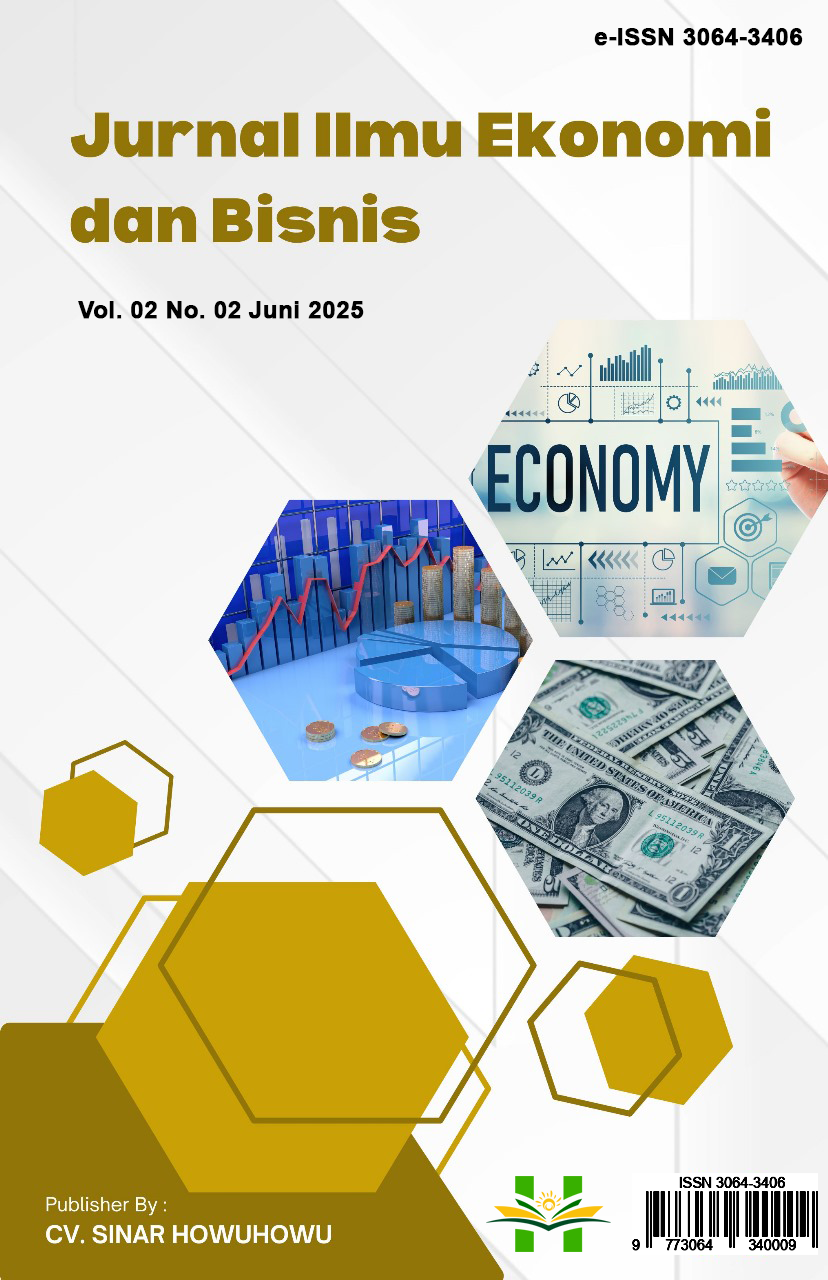Digitalisasi Sistem Pembayaran Dan Dampaknya Terhadap Inklusi Keuangan Di Indonesia
DOI:
https://doi.org/10.70134/jukoni.v2i2.457Keywords:
payment digitalization, financial inclusion, digital financial services, digital literacy, IndonesiaAbstract
The digitalization of payment systems has become a key factor in promoting financial inclusion in Indonesia. This study aims to analyze the impact of digital payment services on the access and participation of the public in the formal financial system. A quantitative approach was employed, collecting data through surveys of 400 respondents across urban and rural areas. Data analysis was conducted using multiple linear regression to examine the relationship between payment digitalization and financial inclusion, complemented by in-depth interviews for contextual understanding. The results indicate that digital payment systems significantly enhance financial inclusion; however, challenges such as uneven digital literacy, infrastructure limitations, and concerns over transaction security remain. The study recommends improving digital education, developing technological infrastructure, and implementing stringent security policies to broaden inclusive and sustainable financial inclusion in Indonesia.
Downloads
References
Arner, D. W., Barberis, J., & Buckley, R. P. (2016). The evolution of fintech: A new post-crisis paradigm? Georgetown Journal of International Law, 47, 1271–1319.
Bank Indonesia. (2022). Laporan tahunan sistem pembayaran digital di Indonesia. Bank Indonesia Press.
Demirgüç-Kunt, A., Klapper, L., Singer, D., Ansar, S., & Hess, J. (2018). The global fintech index: Financial inclusion and digital payments. World Bank.
Creswell, J. W. (2014). Research design: Qualitative, quantitative, and mixed methods approaches (4th ed.). Sage Publications.
Hair, J. F., Black, W. C., Babin, B. J., & Anderson, R. E. (2017). Multivariate data analysis (8th ed.). Cengage Learning.
Pratama, A., & Hidayat, R. (2023). Security and trust issues in digital payment systems: Evidence from Indonesia. Journal of Financial Technology, 5(1), 45-62.
Sari, D. P., & Nugroho, H. (2021). The role of mobile payments in enhancing financial inclusion in Indonesia. Indonesian Journal of Economics and Finance, 8(2), 103-118.
Sekaran, U., & Bougie, R. (2016). Research methods for business: A skill-building approach (7th ed.). Wiley.
Suri, T., & Jack, W. (2016). The long-run poverty and gender impacts of mobile money. Science, 354(6317), 1288-1292. https://doi.org/10.1126/science.aah5309
World Bank. (2020). Global financial inclusion database. https://globalfindex.worldbank.org
Bank Indonesia. (2020). Digital payment ecosystem in Indonesia: Opportunities and challenges. Bank Indonesia Report.
Chen, G., Rasmussen, S., & Reille, X. (2014). Social performance of microfinance institutions: What does the portfolio tell us? CGAP.
Donnelly, R., & Power, D. (2020). Digital payments and financial inclusion: Evidence from the Philippines. Asian Economic Journal, 34(3), 315-333.
G20 Global Partnership for Financial Inclusion (GPFI). (2018). Digital financial inclusion. G20 Secretariat.
Kauffman, R. J., & Riggins, F. J. (2012). Information and communication technology and economic development. Electronic Commerce Research and Applications, 11(3), 217-228.
Kim, Y., & Kwon, S. J. (2019). The impact of mobile payment adoption on financial inclusion in South Korea. Journal of Asian Economics, 63, 101136.
Kumar, S., & Lim, H. (2018). Digital payments and financial inclusion: A cross-country analysis. Journal of Banking and Finance, 90, 178-191.
Lee, I., & Shin, Y. J. (2018). Fintech: Ecosystem, business models, investment decisions, and challenges. Business Horizons, 61(1), 35-46.
Mas, I., & Radcliffe, D. (2011). Mobile payments go viral: M-PESA in Kenya. Capco Institute Journal of Financial Transformation, 32, 169-182.
Mazer, R., & Rowan, P. (2017). Digital financial services and the unbanked: Lessons from Latin America. CGAP Focus Note, 109.
Muthusamy, R., & Udayakumar, A. (2021). Factors influencing adoption of digital payment systems: An empirical study. International Journal of Management, 12(2), 45-58.
Ozili, P. K. (2018). Impact of digital finance on financial inclusion and stability. Borsa Istanbul Review, 18(4), 329-340.
Park, C. S., & Chen, Y. (2017). Effects of digital financial inclusion on poverty reduction: Evidence from China. Economic Modelling, 75, 313-320.
Puspaningtyas, M. D., & Indriani, D. (2020). Analysis of digital payment adoption in rural areas: The case of Indonesia. Journal of Rural Development, 39(4), 567-579.
Riggins, F. J., & Wamba, S. F. (2015). Research directions on the adoption, usage, and impact of the Internet of Things through the use of big data analytics. Electronic Markets, 25(3), 173-180.
Sahay, R., Čihák, M., N’Diaye, P., Barajas, A., Mitra, S., Kyobe, A., & Mooi, Y. (2015). Financial inclusion: Can it meet multiple macroeconomic goals? IMF Staff Discussion Note.
Schneider, G., & Wollscheid, D. (2017). Security challenges in digital payment systems. International Journal of Information Security, 16(3), 299-311.
Singh, S., & Sahu, G. (2020). The impact of digital payments on consumer behavior: Evidence from India. Journal of Payments Strategy & Systems, 14(1), 54-66.
Tiwari, R., & Herstatt, C. (2012). Digital financial inclusion and mobile banking: International perspectives and case studies. Springer.
Zins, A., & Weill, L. (2016). The determinants of financial inclusion in Africa. Review of Development Finance, 6(1), 46-57.
Downloads
Published
Issue
Section
License
Copyright (c) 2025 Fadhilah (Author)

This work is licensed under a Creative Commons Attribution-ShareAlike 4.0 International License.













